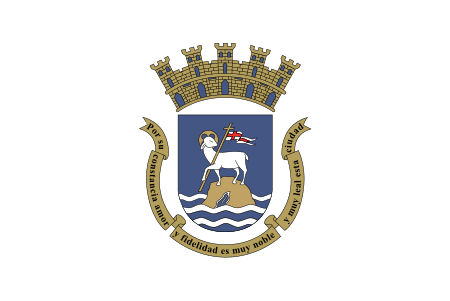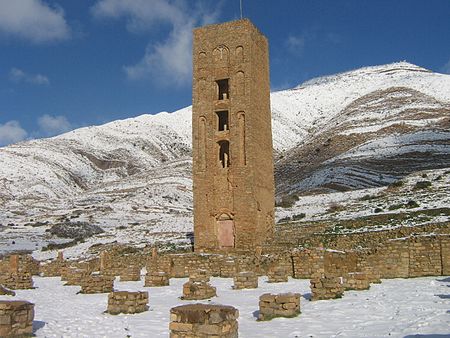La fille mal gardée (Ashton)
| |||||||||||||||
Read other articles:

FilefjellFillefjellHighest pointPeakHøgeloftElevation1,920 m (6,300 ft)GeographyFilefjell CountryNorwayDistrictsVestland, Innlandet and BuskerudRiversSmeddalselvi and BegnaRange coordinates61°09′N 8°15′E / 61.150°N 8.250°E / 61.150; 8.250 Filefjell is a mountainous area in Norway. It is located between Lærdal in the Vestland county and Valdres in Innlandet county. It is the historical, as well as modern, main route, linking Western Norway and East…

Human settlement in EnglandWickham MarketVillage centre with All Saints Church in the backgroundWickham MarketLocation within SuffolkArea4.81 km2 (1.86 sq mi)Population2,156 (2011)[1]• Density448/km2 (1,160/sq mi)OS grid referenceTM3056Civil parishWickham MarketDistrictEast SuffolkShire countySuffolkRegionEastCountryEnglandSovereign stateUnited KingdomPost townWoodbridgePostcode districtIP13Dialling code01728UK Parliament…

Planetary nebula in the constellation Aquarius Saturn NebulaEmission nebulaPlanetary nebulaNGC 7009 by Very Large Telescope.[1]Observation data: J2000.0 epochRight ascension21h 04m 10.877s[2]Declination−11° 21′ 48.25″[2]Distance2000-4000 ly(See article) lyApparent magnitude (V)8.0[3]Apparent dimensions (V)41″ × 35″[2]ConstellationAquariusPhysical characteristicsRadius0.2 to 0.4 lyAbsolute magnitude (V)2.5 to 1Not…

此條目介紹的是馬來西亞的政黨。关于同名已解散的香港政黨,请见「希望聯盟 (香港政黨)」。 希望联盟Pakatan HarapanAlliance of Hope希望联盟标志马来语名称Pakatan Harapanڤاكتن هارڤن替代语言:Aliansi Harapan英语名称Alliance of Hope替代语言:Pakatan Harapan Plus华语名称希望联盟Xīwàng liánméng淡米尔名称நம்பிக்கை கூட்டணி简称PH、希盟主席安华共同主席旺阿�…

Chinese Bronze Age culture Feijiahe cultureGeographical rangeEast of Dongting LakePeriodBronze Age ChinaDatesc. 1300 – 1000 BCType siteFeijiahe and Zhangshutan[1]Major sitesFeijiahe, Zhangshutan, Duimenshan, TonggushanPreceded byErligang culture The Feijiahe culture, also known as Zhangshutan-Feijiahe culture[2][3] or Duimenshan-Feijiahe,[4][5] is a Bronze Age archaeological culture in China.[5] It has been commonly dated to approximately 1300 to…

National Beauty pageant in Puerto Rico Not to be confused with Miss Puerto Rico. Miss Universe Puerto Rico OrganizationFormation1952; 72 years ago (1952)TypeBeauty pageantHeadquartersSan JuanLocationPuerto RicoMembership Miss UniverseOfficial language SpanishKey peopleYizette Cifredo(National Director)Websitemuniversepr.com Miss Universe Puerto Rico is a national beauty pageant in Puerto Rico, held annually since 1952. Currently, the pageant is responsible for selecting the cou…

Revenue block in Kanchipuram district, Tamil Nadu, India The Kunnattur block is a revenue block in the Kanchipuram district of Tamil Nadu, India. It has a total of 44 panchayat villages. References Map of revenue blocks of Kanchipuram district. Government of Tamil Nadu. Archived from the original on 3 March 2016. vteKanchipuram districtDistrict headquarters Kanchipuram Region Tondaimandalam State Tamil Nadu Country India Taluks Sriperumbudur taluk Kundrathur taluk Walajabad taluk Kanchipuram tal…

أحمد الدوخي معلومات شخصية الاسم الكامل أحمد فهد الدوخي الدوسري الميلاد 25 أكتوبر 1976 (العمر 47 سنة)الرياض، السعودية الطول 1.75 م (5 قدم 9 بوصة) مركز اللعب مدافع الجنسية سعودي الرقم 2 المسيرة الاحترافية1 سنوات فريق م. (هـ.) 1995–2005 الهلال 2005–2008 الاتحاد 2008–2009 قطر 2009–2011 النص�…

نوكيا 6131معلومات عامةالنوع هاتف محمول الصانع نوكيا تعديل - تعديل مصدري - تعديل ويكي بيانات نوكيا 6131 هو أحد أجهزة نوكيا، شركة الهواتف والتقنية النقالة.[1][2] يأتي هذا الجهاز مع شاشة نوعها 320 * 240 24-بت (16,777,216) لون. تم إصدار هذا الجهاز في 2006. تقنيته/تردده هي النظام العالمي للإت�…

Time Out magazineBerkas:Time Out logo.jpgKepala penyunting, LondonCaroline McGinnPenyunting LondonGail TolleyPenyunting, New YorkJillian AnthonyFrekuensiMingguan, bulanan dan dasa-bulanFormatBudaya, hiburan dan paduan peristiwaSirkulasi6.5 jutaPendiriTony ElliottDidirikan1968; 56 tahun lalu (1968)PerusahaanTime Out Group Ltd.NegaraBritania RayaBerpusat diLondon, InggrisBahasaInggris, multi-bahasaSitus webwww.timeout.com Time Out adalah majalah perjalanan Inggris yang diterbitkan oleh Time O…

Kontes Lagu Eurovision 1978 adalah edisi ke-23 dari Kontes Lagu Eurovision tahunan. Acara tersebut diadakan pada 22 April 1978 di Paris. Kontes tersebut dimenangkan oleh Izhar Cohen & Alphabeta yang mewakili Israel dengan lagu A-Ba-Ni-Bi.[1] Referensi ^ O'Connor, John Kennedy (2005). The Eurovision Song Contest 50 Years The Official History. London: Carlton. ISBN 1-84442-586-X. Wikimedia Commons memiliki media mengenai Eurovision Song Contest 1978. lbsKontes Lagu Eurovisio…

Hamburg Südamerikanische Dampfschifffahrts-Gesellschaft A/S & Co KGKapal peti kemas Cap San Antonio bersandar di Pelabuhan Hamburg, April 2014JenisA/S & Co KGIndustriTransportasi peti kemasDidirikan1871KantorpusatHamburg, JermanTokohkunciDr. Arnt Vespermann (CEO) Frank Smet (CCO) Jakob Wegge-Larsen (CFO)ProdukPengapalanDistribusi peti kemasKaryawan6.301 (2016)IndukMaerskSitus webwww.hamburgsud.com Hamburg Südamerikanische Dampfschifffahrts-Gesellschaft A/S & Co KG atau dengan…

NASA satellite of the Explorer program Not to be confused with Explorer II. Explorer 11Explorer-11 satelliteNamesS-15NASA S-15Mission typeGamma-ray astronomyOperatorNASAHarvard designation1961 Nu 1COSPAR ID1961-013A SATCAT no.00107WebsiteExplorer 11 at GSFCMission duration6 months and 20 days Spacecraft propertiesSpacecraftExplorer XISpacecraft typeScience ExplorerBusS-15ManufacturerGoddard Space Flight CenterLaunch mass37.2 kg (82 lb) [1] Start of missionLaunch date2…

Series of suicide bombings by Salafia Jihadia militants 2003 Casablanca bombingsPart of the Insurgency in the Maghreb (2002–present)Commemorative stele at Mohammed V Square in memory of the victims of the attack 1.5km1mile Casa de España Jewish Cemetery of Casablanca Hotel Farah Jewish Alliance Positano Locations of the attacks—points denote suicide bombingsLocationCasablanca, MoroccoDate16 May 2003; 21 years ago (2003-05-16) 21:45 – 22:15 (UTC+1)TargetMoroccan…

British sportsman John Charles ThringBorn(1824-06-11)June 11, 1824Alford, SomersetDiedOctober 3, 1909(1909-10-03) (aged 85)Dunmow, EssexNationalityEnglishOther namesJ. C. Thring, Charles ThringOccupation(s)Clergyman, teacherKnown forContribution to history of association footballNotable workThe Simplest GameParentsRev. John Gale Dalton Thring (father)Sarah Thring (née Jenkyns) (mother)FamilyTheodore Thring (brother)Henry Thring (brother)Godfrey Thring (brother)Edward Thring (brot…

Berber dynasty in north Africa Hammadid dynastyالحماديون (Arabic) Al-Hāmmādiyūn1014–1152Hammadid territory circa 1050 (in green), and extended territories (dotted line) controlled in certain periodsStatusNominal vassal of the Abbasid or Fatimid Caliphate[a]CapitalQal'at Bani Hammad (c. 1007–1090) Bejaia (c. 1090–1152) Official languagesArabic[1][2]Common languagesMaghrebi Arabic Berber languagesReligion Official:Islam Minority:Christianity, Jud…

American politician Hubert VoMember of the Texas House of Representativesfrom the 149th districtIncumbentAssumed office January 11, 2005Preceded byTalmadge L. Heflin Personal detailsBorn (1956-05-30) May 30, 1956 (age 68)South VietnamPolitical partyDemocraticResidence(s)Houston, Texas, U.S.Alma materUniversity of Houston (BS) Hubert Vo (Vietnamese: Hubert Võ, born May 30, 1956) is an American politician who is a Democratic member of the Texas House of Representatives for Ho…

André Leon TalleyTalley pada tahun 2009Lahir(1948-10-16)16 Oktober 1948Washington, D.C., A.S.Meninggal18 Januari 2022(2022-01-18) (umur 73)White Plains, New York, A.S.PendidikanNorth Carolina Central University (BA)Universitas Brown (MA)PekerjaanJurnalis modeTahun aktif1974–2022Situs webtwitter.com/officialalt André Leon Talley (16 Oktober 1948 – 18 Januari 2022) adalah seorang jurnalis mode, direktur kreatif, dan editor senior dari majalah ternama, Vogue.[1]…

Aéroport de ShannonAerfort na SionainneShannon Airport Localisation Pays Irlande Ville Limerick (Comté de Clare) Coordonnées 52° 42′ 00″ nord, 8° 55′ 14″ ouest Altitude 14 m (46 ft) Informations aéronautiques Code IATA SNN Code OACI EINN Type d'aéroport Commercial Gestionnaire Dublin Airport Authority Site web gestionnaire Consulter Site web aéroport Consulter Pistes Direction Longueur Surface 06/24 3 200 m (10 499 ft) asphalte Géolocalisa…

Wo soll ich fliehen hinGerman Lutheran hymnThe hymn-writerCatalogueZahn 2164Textby Johann HeermannLanguageGermanPublished1630 (1630) Wo soll ich fliehen hin (Where should I flee) is a hymn in seven stanzas by the German Baroque poet, Lutheran minister and hymn-writer Johann Heermann. It was first published in 1630 during the Thirty Years' War. It is a penitential hymn for Lent. History Heermann, the hymn's poet, was influenced by the tract Buch von der deutschen Poeterey (Book of the G…